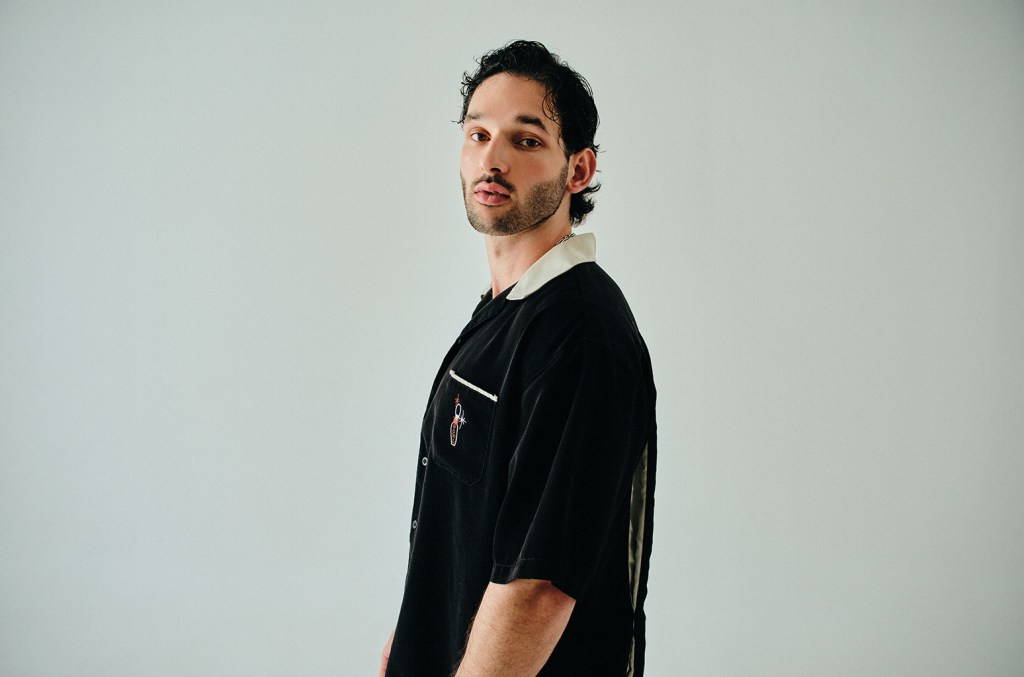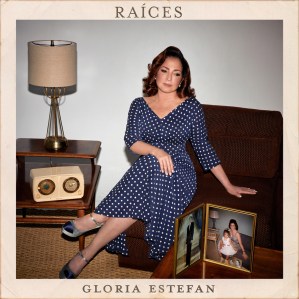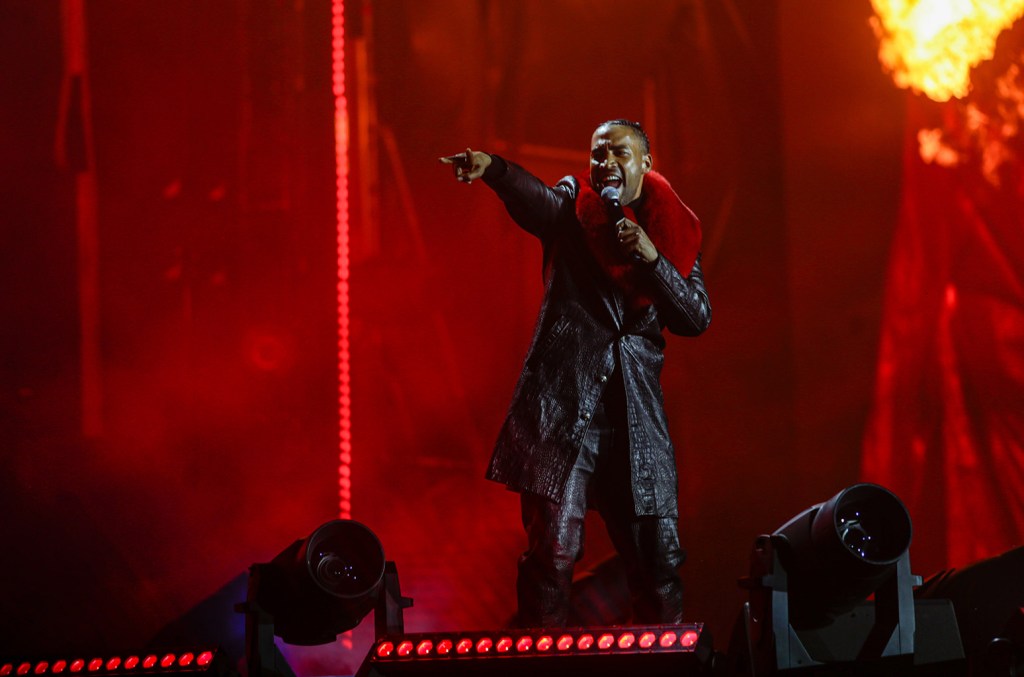Latin
Page: 19
Shakira‘s show scheduled for Thursday night (May 29) at Boston’s Fenway Park was canceled just hours before it started “due to unforeseen circumstances,” the stadium announced on social media. Jason Aldean and Brooks & Dunn’s concert set for Friday night at the ballpark has also been called off. “The Shakira and Jason Aldean and Brooks […]
05/29/2025
The Colombian star has made notable fashion statements throughout her career.
05/29/2025
Beéle was 12 years old when he discovered “Aye” by Nigerian-American artist Davido — a song he says immediately connected him with the Afrobeat genre.
“I felt the vibe and started writing notes and poems,” he tells Billboard. “It was my way of disconnecting from the world. I preferred doing that and practicing my guitar to going out and playing with my friends.”
Explore
Explore
See latest videos, charts and news
See latest videos, charts and news
His native Barranquilla — located on the Caribbean Coast of Colombia, and which is also home to Shakira and Joe Arroyo — has also influenced the Latin Afrobeat and pop-dancehall sound he’s known for today.
Trending on Billboard
“I grew up in a family where salsa, champeta, and African music from the 80s and 90s were heavily influenced,” he explains. “I grew up surrounded by that culture and by a working-class neighborhood in Barranquilla, where I found my place over time. I understood that everything that made me proud of where I come from and the freedom to express myself perfectly reflects my personality and who I truly am.”
At 16, the artist born Brandon de Jesús López Orozco (Beéle is the pronunciation of his initials BL), released his debut single “Loco” under Hear This Music — a feel-good, suave Afrobeats groove backed by his deep, melodic vocals. Its remix, featuring Farruko, Natti Natasha, and Manuel Turizo — and released in the midst of the 2020 pandemic — earned the emerging act his first Billboard chart entry, reaching No. 18 on the Latin Digital Song Sales chart.
Since then, the Colombian artist has carved his sound path in the industry by teaming up with artists such as Feid, Rauw Alejandro, Myke Towers, Maluma and Piso 21. His 2023 collaboration with Sebastian Yatra and Manuel Turizo, “Vagabundo,” marked his first No. 1 hit on both the Latin Airplay and Latin Pop Airplay charts. This year, “Mi Refe” with Ovy on the Drums peaked at No. 8 on the Latin Rhythm Airplay chart and “La Plena (W Sound 05)” with W Sound and Ovy on the Drums gave him his first No. 1 on the Billboard Argentina Hot 100 chart.
“One day in the studio, I stopped, looked in the mirror to see who I was, and from there I said, I love this,” he expresses. “What I wanted to show the world is that beyond being an artist, I want them to feel what I feel. From then on, my career has been created by that musical and diverse explosion that defines me. All along, I’ve tried not to look like anyone else.”
Earlier this month, Beéle released his debut studio album Borondo (5020 Records), home to 26 tracks, including “Dios Me Oyó” with Marc Anthony. The set marked the artist’s debut on the Billboard album charts, bowing at No. 10 on Top Latin Albums and No. 4 on Top Latin Rhythm Albums on the lists dated May 31.
“My encounter with music has always been unexpected,” he says. “For me, music is a connection to my everyday life. I’ve had to live the way I live to be able to make the songs I’m making. I express myself. My heart speaks, my emotions speak, and they connect with the audience. I don’t just make music, I make art.”
Below, learn more about May’s Billboard Latin Artist on the Rise:
Name: Brandon de Jesús López Orozco
Age: 22
Recommended Song: “Mi Refe”
Biggest Accomplishment: “Since I started making music, I’ve achieved everything I’ve wanted, in my own way. My greatest achievement, truly, professionally speaking, has been making my first album, because I’ve always prayed for it and asked God that my music would connect with hearts the way his words connect with mine. I’ve been able to achieve something in this life that would make my children proud.”
What’s Next: “People think that after making this album, I’m going to stop for a while, but there are some really beautiful collaborations coming this summer. That way people can continue enjoying Beéle.”
SESAC Latina celebrated the global success of its songwriters and publishers at its annual SESAC Latina Music Awards, which took place at the Beverly Hills Hotel in Beverly Hills, Calif., on Wednesday (May 28).
Explore
Explore
See latest videos, charts and news
See latest videos, charts and news
Two years after taking home the award, Latin urban star Lenny Tavárez was named pop/Latin rhythm songwriter of the year once more, this time for hits including “Piscina,” “Tu Feo,” and “La Ranger.”
Meanwhile, the pop/Latin rhythm song of the year award went to “Bellakeo,” a reggaetón banger written by Ángel Sandoval and recorded by Peso Pluma and Anitta. Released in December 2023, the track peaked at No. 3 on the Billboard Hot Latin Songs chart a week later.
Trending on Billboard
Alex Hernández received the regional Mexican songwriter of the year, honored for songs including Xavi’s “La Diabla,” which also took the regional Mexican song of the year award. The song gave the young Mexican singer his first No. 1 on the Billboard charts in January 2024, when it reached the summit of Hot Latin Songs.
Sony Music Publishing was named publisher of the year.
“For more than three decades, we’ve come together to celebrate the dedication and creativity that go into the music that inspires us,” Celeste Zendejas, svp, SESAC Latina, said. “I couldn’t be prouder of our incredible songwriters and publishers for making this another outstanding year in music.”
Guests at Wednesday’s ceremony were treated to performances by Lenny Tavárez and Banda Carnaval, which brought a taste of the Carnaval de Mazatlán to the event.
See the main winners of the 2025 SESAC Latina Music Awards list below:
Regional Mexican Songwriter of the Year
Alex Hernández
Pop/Latin Rhythm Songwriter of the Year
Lenny Tavárez
Regional Mexican Song of the Year
“La Diabla,” written by Alex Hernández
Pop/Latin Rhythm Song of the Year
“Bellakeo,” written by Ángel Sandoval
Publisher of the Year
Sony Music Publishing
Every month, Billboard Latin and Billboard Español editors spotlight a group of rising artists whose music we love. Think “diamantes en bruto,” or “diamonds in the rough.” These are newcomers who have yet to impact the mainstream — but whose music excites us, and who we believe our readers should make a point to discover.
Explore
See latest videos, charts and news
See latest videos, charts and news
Our latest edition of On the Radar Latin includes a wave of emerging artists, who we discovered either by networking, or coming across their music at a showcase, or elsewhere. See our recommendations this month below:
Artist: Baltazar Lora
Trending on Billboard
Country: Colombian American
Why They Should Be on Your Radar: Baltazar Lora was born and raised in Louisville, Kentucky to Colombian parents, which explains why his sound straddles two different worlds. There’s the Latin side that pulls at his heart strings and feeds on 70s classics from the Latin songbook. Check out his funky take on Danny Daniel’s “Por el amor de una mujer.” And then there’s what he grew up listening to –alt rock like The Strokes and Cage The Elephant—which inform his original material, melodic, catchy and with an indie vibe that doesn’t fall into the contrived territory of so many homegrown Latin acts. Lora can sing equally well in both English and Spanish, and in fact, his beginnings with his own band, in high school and later at Yale University, were in English. He’s not only convincing in Spanish but also fills a void there. His latest single, “Why Bye,” evokes the likes of Cage the Elephant but also Morat, and there’s clearly an appetite for this kind of artist and sound (and the cute hipster look doesn’t hurt either). Now working with veteran producer Kike Santander, Lora is testing different waters, and getting us to listen in the process. — LEILA COBO
Song For Your Playlist: “Why Bye”
Artist: Doctor Nativo
Country: Guatemaya (as he calls it)
Why The Should Be On Your Radar: Doctor Nativo has long been a voice for the voiceless, weaving poetry and activism into music that moves both the spirit and the soul. Formerly known as part of the pioneering Guatemalan hip-hop trio Balam Ajpu — who fused indigenous Mayan philosophy with modern rap — Nativo has continued to channel ancestral wisdom into songs that grapple with current injustices. His latest track, “Minorías,” featuring singer Adriana Primavera, is an emotional portrait of immigrant life. Set against nylon-string guitar melodies and haunting wind instruments, the single tells stories of struggle and survival, sung from the perspective of undocumented immigrants. Themes of familial heartbreak, displacement, and systemic oppression shape the lyrics, painting a devastating yet honest picture of life on the margins. The track, in a way, evokes Manu Chao’s “Clandestino,” striking a rare balance between beauty and heartbreak. The video, shot at the U.S.-Mexico border wall in Tijuana, underscores the song’s urgency, as immigration remains a polarizing topic worldwide.Nativo plays the role of an immigrant caught in the shadow of the American Dream, exposing the toll of chasing asylum and opportunity. — ISABELA RAYGOZA
Song For Your Playlist: “Minorías”
Artist: Vivillo
Country: Spain
Why They Should Be on Your Radar: Vivillo made his professional debut in 2004, when he entered the Benidorm Festival with the song “Soñé” under the stage name Viviarte. He was then 18 and had already been in music for over a decade, as he joined his church choir at the age of 6. Originally from La Línea de Concepción (Cádiz), Vivillo (real name: Rafael Fernández) has a Latin pop/urban sound with flamenco roots that can be heard on songs including “Solo Tú” and “Ella,” his latest singles. He has also collaborated with artists like Chabuco, who joined him on the song “Alma de Cristal” for his 2019 album Hay Quien Espera. – SIGAL RATNER-ARIAS
Song for your playlist: “Ella”
Name: Mattei
Country: Puerto Rico
Why They Should Be On Your Radar: In February, Mattei (real name: Sebastián Rodríguez Mattei) dropped his first-ever song called “Pa Las Girlas” (for the girls). It’s old-school beat à la reggaetón de marquesina instantly captivated the attention of artists such as Feid and Nicky Jam, who helped propel the tune to its viral success on social media. With his clean-cut yet bad-boy look and distinct voice, Mattei promises to become the next breakout star of Puerto Rico — so much so that genre icons Árcangel, De La Ghetto, and Jowell & Randy hopped on the “Pa Las Girlas (Remix)” earlier this month. — JESSICA ROIZ
Song For Your Playlist: “Pa Las Girlas (Remix)” feat. Árcangel, De La Ghetto, Jowell & Randy
The 2025 Heat Latin Music Awards promises to deliver memorable performances and big wins, and is set to air live from Medellín, Colombia, on Thursday, May 29.
Popularly known as Premios Heat, this year’s nominations are led by Beéle with seven nods, including best urban artist and song of the year. The Colombian Afrobeat artist is followed by six-time nominees Bad Bunny and Feid; Elena Rose with five nods; and with four nominations each are Karol G, Camilo, Yamie Safdie and Ovy On The Drums.
Explore
See latest videos, charts and news
See latest videos, charts and news
In previous years, Premios Heat — founded by Colombian music executive and Billboard Latin Power Player Diana Montes — was celebrated on the beach in Punta Cana, Dominican Republic. This is the first time the event takes place in Colombia.
Trending on Billboard
The awards show launched in 2015 via the HTV and TBS networks, and counted on the support of artists such as Juanes, Juan Luis Guerra, Nicky Jam and a then-rising J Balvin.
“We have only existed for 10 years but have grown in a huge way,” Montes told Billboard last year. “When we started, HTV was only seen in Latin America, and there was no great impact in Mexico or the U.S. Now we’ve expanded. From 2020, 2021, our biggest audiences are in the United States, Mexico, Dominican Republic, Colombia, Peru and Ecuador, in that order.”
Below, check out how to watch the show and see who the performers are for the 2025 edition.
How to Watch
Fans will be able to watch the 2025 Heat Latin Music Awards at 7 p.m. ET on Thursday (May 29) via television on TeleMedellín and through a global livestream on the LosHeat.Tv app.
Performers
Alex Campos
Alexis y Fido
Arelys Henao
Beéle
DJ Adoni
Eddy Herrera
Elena Rose
El Blachy
Farruko
Francy
Hades 66
Jessi Uribe
Jombriel
Juan Duque
Kapo
Lirios
LIT Killah
Luis Alfonso
Majo Aguilar
Miguel Bueno
Nacho
Nanpa Basico
Paola Jara
Pipe Bueno
Wilfran Castillo
Yailin La Más Viral
Gloria Estefan is ready to introduce the world to Raíces, her first Spanish-language album in 18 years and the 30th in her 50-year career. It is, in the words of the superstar, “like a modern Mi Tierra” — a sort of sequel to her iconic first LP in her native language, but freer.
“When we had the concept for the [1993] album Mi Tierra, we wanted to highlight a rich era of Cuban music that had been celebrated worldwide B.C. — before Castro,” the Cuban-American artist tells Billboard Español. “Back then, we were very careful to use the language that would have been used in the 1940s in the songs — the arrangements, the instrumentation, we kept it very much of that era. Here, we felt free to explore, always keeping family in mind and the music that gave us so much richness, and which helped us create these fusions, but coming from a very organic and real place.”
Set to release on Friday (May 30) under Sony Music Latin, Raíces consists of 13 tracks mostly written by musician and producer Emilio Estefan Jr., Gloria’s inseparable partner in life and career for over four decades. Salsa, bolero, and tropical rhythms resonate in songs ranging from previously released singles like “Raíces” and “La Vecina (No Sé Na’)” to deeply romantic tracks such as “Tan Iguales y Tan Diferentes,” “Te Juro,” “Agua Dulce,” and “Tú y Yo.”
Among the few songs penned by Gloria is the sweet “Mi Niño Bello (Para Sasha),” dedicated to her only grandson, with the English version “My Beautiful Boy (For Sasha).” “Since he was born, we’ve had a very beautiful and close relationship,” she proudly shares, adding that in Spanish she wanted to create something “with the flavor of ‘Drume Negrita,’ something very classic, a Cuban lullaby.”
A second song on the album, “Cuando el Tiempo Nos Castiga” (co-written by Emilio and Gian Marco and originally recorded by Jon Secada in 2001), also has a new English version courtesy of Gloria, titled “How Will You Be Remembered.” “I never translate exactly. I think about the feeling, the emotion, what one wants to express about the theme, and I approach it in the new language. In English, I was thinking more about legacy — you want to feel happy with what you left behind,” she explains about the discrepancy in the titles, with the one in Spanish meaning “When time punished us.”
Estefan — who in 2023 became the first Latina inducted into the Songwriters Hall of Fame and in 2024 received the Legend Award at the Billboard Latin Women in Music ceremony — usually writes more for her albums, but this time she was focused on creating songs for the upcoming Broadway musical BASURA alongside her daughter Emily when Emilio presented her with the idea for the song “Raíces” a couple of years ago.
“Emilio didn’t even realize it was my 50th [career anniversary],” recalls Estefan, who wanted to do something special to celebrate the milestone. “I told him, ‘Babe, I can’t change my mindset for this, but I would like, if I do an album again, for it to be tropical, for it to be in Spanish.’ He says, ‘Do you trust me?’ I go, ‘Who else am I gonna trust than you?’”
Raíces is Gloria Estefan’s first Spanish-language album since 90 Millas, which debuted and spent three weeks at No. 1 on Billboard’s Top Latin Albums chart in October 2007. Mi Tierra, meanwhile, spent a whooping 58 weeks at the top of the chart.
Estefan also spoke about the new Pope Leo XIV, immigration, and more. Watch the interview in the video above.
Gloria Estefan, ‘RAICES’
Courtesy Photo
Morat’s Ya Es Mañana (YEM) album has topped Billboard’s latest new Latin music poll published on Friday, May 23. In support of the weekly New Music Latin roundup and playlist, curated by Billboard Latin and Billboard Español editors, music fans voted for the Colombian band’s new studio album as their favorite music release of the week.
Explore
Explore
See latest videos, charts and news
See latest videos, charts and news
The 14-track set, released via Universal Music Spain, generated more than 59% of the vote, beating out other new album releases last week including Alejandro Sanz’s ¿Y Ahora Qué?; Jesse & Joy’s Lo Que Nos Faltó Decir; and Los Tigres del Norte’s La Lotería, to name a few.
In YEM, the Bogotá-based group celebrates brotherhood, evolution, and above all, dreams coming true. The tracks are mostly inspired by riveting rock music from the ’90s, and include two collaborations: “Sin Ti” with Jay Wheeler and “Me Toca a Mi” with Camilo.
Trending on Billboard
https://open.spotify.com/album/3ImR4LsUQPbMKCa8FCuFYO?si=HA5XxSbcR9-6e8HMfRmrWA
“This is the moment to make the most of life, to be aware of what we must do now to create an incredible future,” said group member Juan Pablo Villamil during the band’s album release party in Miami. “For us, this album embodies the idea of the band we have always wanted to be, and we hope you enjoy it.”
Sanz’s new EP — whcih includes collabs with Shakira, Manuel Turizo and Grupo Frontera — and Karol G’s steamy perreo “Latina Foreva” came in at second and third place, respectively, on the fan-related poll. See the results of the latest poll below, which also included new songs by Greeicy, Carín León, Myke Towers, and Christian Nodal.
Take Our Poll
Editor’s Note: The weekly New Music Latin poll results are posted if the poll generates over 500 votes.
Twenty-five years ago, the self-proclaimed La Chica Dorada bid farewell to the old millennium in unparalleled style. With the release of her fifth studio album, Paulina, on May 23, 2000, in the U.S., Paulina Rubio reaffirmed her status as a Latin pop icon. It was the evolution of an artist who, despite an already impressive […]
Drawing in a massive crowd on day two of Sueños Music Festival, Don Omar cemented his icon status delivering a jam-packed setlist to wrap the fourth edition of the event in Chicago’s Grant Park.
On Sunday, the reggaetón powerhouse came out on stage just a few minutes before his 9 p.m. start time, eager to sing to the crowd — significantly larger than yesterday’s — that had gathered to see him perform. Don Omar did not disappoint and he knew exactly which songs would get his fans going.
From “Dale Don” to “Hasta Abajo” and “Dile,” the Puerto rican hitmaker started with a bang. “Latinos make some noise,” he said at the top of his one-hour set. He was a man of a few words, letting the music speak for itself. “Are we having fun?” he asked at one point. It’s safe to say the crowd was indeed having fun with groups of friends perreando and singing along with the self-proclaimed King of Kings.
Trending on Billboard
He went on to sing “Pobre Diabla,” Hector y Tito’s “Morena,” “Salió El Sol,” “Se Menea,” “Taboo,” “Danza Kuduro” and “Bandoleros.” But a highlight of the night was when he sang “Ella y Yo,” his 2005 hit duet with Romeo Santos. “You guys know this song, right?” he asked, almost rhetorically.
One of the most memorable collaborations of the 21st century, Santos and Don Omar engage in a call-and-response of sorts to tell a story of lust, infidelity and betrayal in “Ella y Yo.” Don Omar asked the Sueños crowd to play the part of Santos and they promptly followed his orders, making for an epic duet between Don Omar and his fans.
Don Omar most recently wrapped his Back to Reggaetón World Tour, which marked his grand return to the stage in celebration of his decades-spanning career.
Day two of Sueños Music Festival also included riveting performances by Kapo, Bellakath, Omar Courtz, Jhayco, Tito Double P, Grupo Frontera and Wisin.

 State Champ Radio
State Champ Radio 








